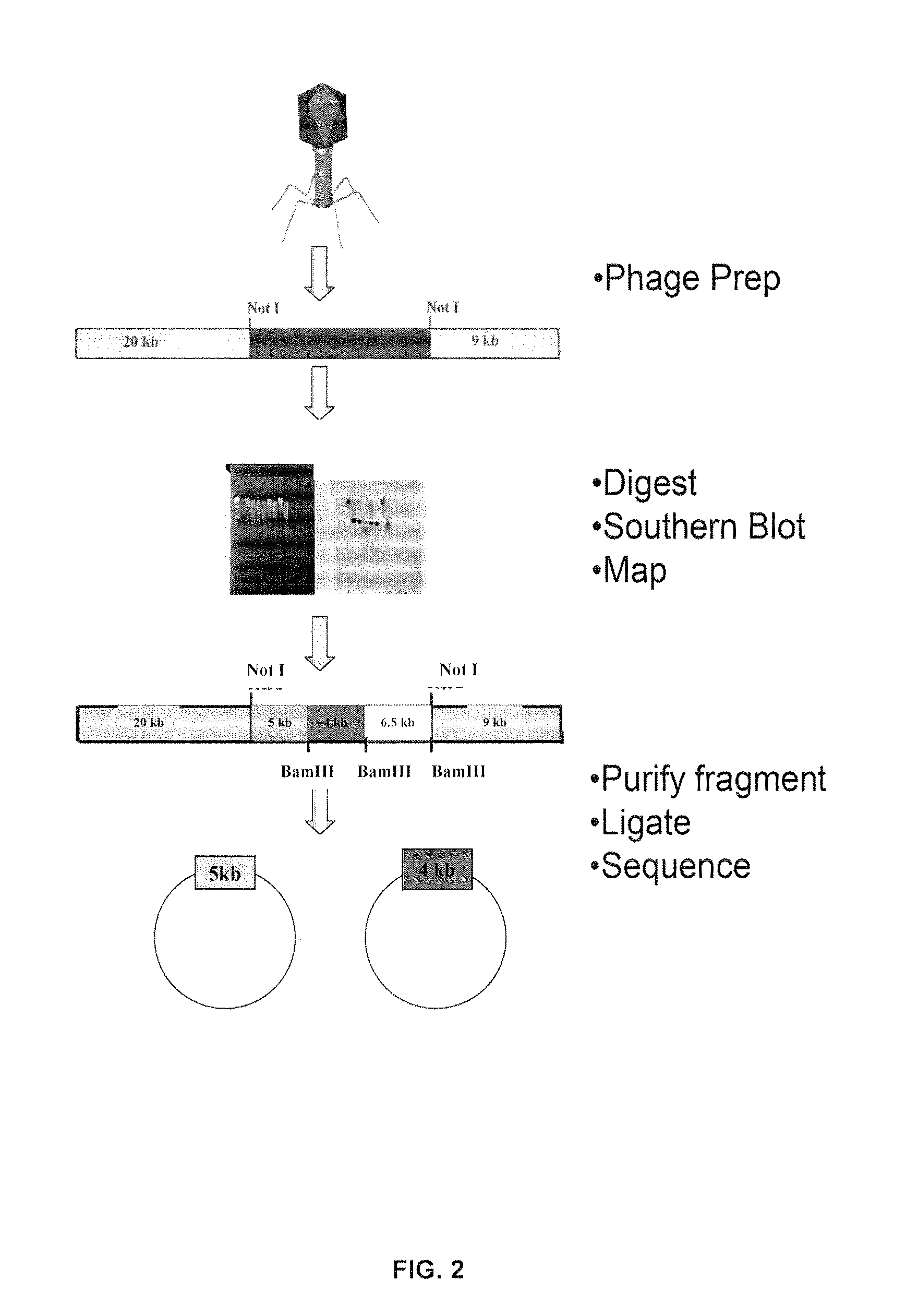Methods of raising crustaceans in low salinity water
a technology of low salinity water and crustaceans, which is applied in the field of methods of raising crustaceans in low salinity water, can solve the problems of unreliable and unstable current methods of raising shrimp, significant challenges to the continued practice of traditional methods, and high cost of coastal land. , to achieve the effect of improving meat quality, improving growth and reducing diseas
- Summary
- Abstract
- Description
- Claims
- Application Information
AI Technical Summary
Benefits of technology
Problems solved by technology
Method used
Image
Examples
example 1
Identification and Characterization of the LobCaR Gene
[0174]A reduced stringency DNA-DNA hybridization approach was used to identify and isolate the LobCaR gene. A 32P-labeled probe containing the cDNA sequence encoding the complete amino acid sequence of an Atlantic salmon CaSR, SalmoKCaR II, which had been previously isolated and described in U.S. Pat. Nos. 6,979,558, 6,951,739, 6,979,559, and 7,101,988, was utilized to probe a commercially-available lobster genomic library (Stratagene FIX II Lobster Genomic Library catalog #946630). A total of 1 million plaques on filters were screened and washed under reduced stringency hybridization conditions that included hybridization and washes using 2×SSC, 0.1% SDS at 53′C. A total of 2 positive plaques were identified (FIG. 1) that appeared to be identical upon purification and mapping by restriction enzyme analysis.
[0175]The positive plaque containing the LobCaR gene was then characterized using standard subcloning and DNA sequencing met...
example 2
Comparison of the Amino Acid Sequence of the Putative LobCaR to Known CaSRs from Other Species
[0180]A comparison of the percent identity (exact match) between aligned amino acid sequences of the putative LobCaR and other known CaSRs was performed (Table 1). The putative amino acid sequence of LobCaR (SEQ ID NO:3) is 64.3% identical to human parathyroid calcium receptor (HuPCaR) and 65.7% identical to the shark kidney CaSR(SKCaR). By contrast, LobCaR is approximately 83.5% identical to SalmoKCaR-2.
TABLE 1Comparison of putative LobCaR amino acid sequence aligned to otherCaSRs.PerCent Amino Acid Identities for Various Calcium Sensing Receptorsor Polyvalent Cation Sensing ReceptorsAs Compared to the Lobster Polyvalent Cation Sensing Receptor(LobCaR) Consisting of 944 Amino AcidsAA Identical toLobster# ofPVCR (LobCaR)Name of CaSR or PVCRAmino AcidsNumber of AA%Human Calcium Sensing1078693 of 107864.3Receptor (HuPCaR)Shark Kidney Polyvalent1027675 of 102765.7Cation Sensing Receptor (SKCaR...
example 3
Expression of the LobCaR Gene in Lobsters is Tissue-Specific
[0182]To determine whether the amino acid sequence of SEQ ID NO:3 is the LobCaR protein, and to demonstrate that the LobCaR gene is expressed in various tissues of lobsters, we utilized two separate polyclonal antibodies that were created for both immunocytochemistry analyses and immunoblotting experiments. One antibody, called LOB-1, was raised against a 19 amino acid peptide (SEQ ID NO:4) of LobCaR. The other antibody, called SDD, was raised previously against a 16 amino acid peptide (SEQ ID NO:6) from salmon CaSR. To produce the polyclonal antibodies, the individual peptides were synthesized, conjugated to an antigenic protein (keyhole limpet hemocyanin) and injected intradermally into rabbits. Rabbit polyclonal antisera were produced using standard methods and techniques that are generally known to those of skill in the art. For the SDD antibody, the peptide sequence used to create the antibody differs from the correspo...
PUM
| Property | Measurement | Unit |
|---|---|---|
| weight | aaaaa | aaaaa |
| weight | aaaaa | aaaaa |
| weight | aaaaa | aaaaa |
Abstract
Description
Claims
Application Information
 Login to View More
Login to View More - R&D
- Intellectual Property
- Life Sciences
- Materials
- Tech Scout
- Unparalleled Data Quality
- Higher Quality Content
- 60% Fewer Hallucinations
Browse by: Latest US Patents, China's latest patents, Technical Efficacy Thesaurus, Application Domain, Technology Topic, Popular Technical Reports.
© 2025 PatSnap. All rights reserved.Legal|Privacy policy|Modern Slavery Act Transparency Statement|Sitemap|About US| Contact US: help@patsnap.com



